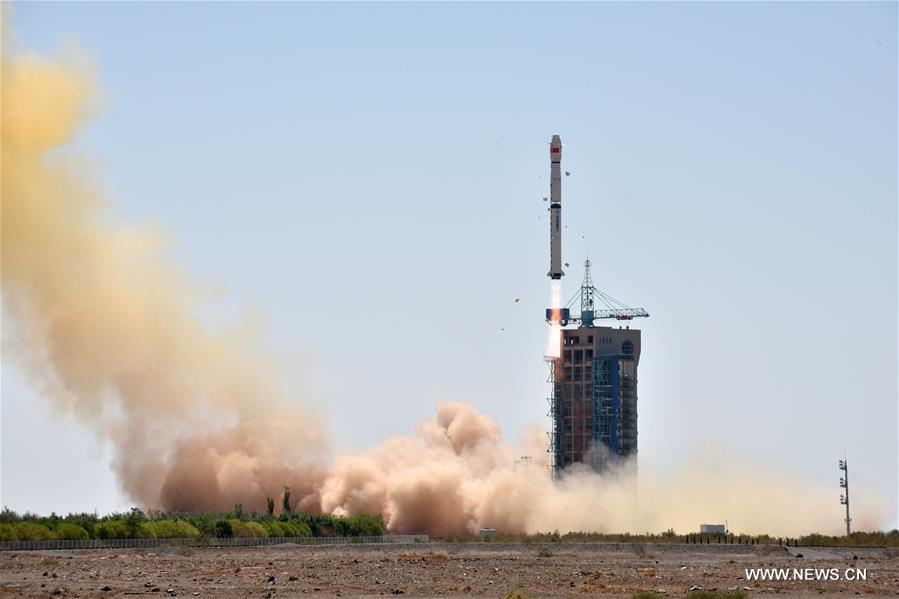
A Long March-4B rocket carrying X-ray space telescope to observe black holes, pulsars and gamma-ray bursts blasts off from Jiuquan Satellite Launch Center in northwest China's Gobi Desert, June 15, 2017. (Xinhua/Zhen Zhe)
BEIJING, June 19 (Xinhua) -- China is achieving landmarks in science and technology at breakneck speed.
The country's Tianzhou-1 cargo spacecraft completed its second docking with Tiangong-2 space lab on Monday.
Chinese scientists announced they have realized satellite-based distribution of entangled photon pairs over a record distance of more than1,200 kilometers Friday, a major breakthrough that could be used to deliver secure messages.
In the same week, China successfully launched its first X-ray space telescope to study black holes, pulsars and gamma-ray bursts, receiving its first package of data.
In May, China's first home-grown large passenger jet C919 made its maiden flight; Chinese scientists announced they had built world's first quantum computing machine; and China's manned submersible Jiaolong conducted more dives in the sea.
In April, China launched its first domestically-built aircraft carrier.
Such a string of achievements shows the country's innovation-driven development strategy is paying off.
The latest Global Innovation Index showed that China rose three spots to 22nd place on the list of the world's most innovative nations in 2017, the only middle-income country to join the top 25 innovative economies.
However, China stepping closer to becoming an innovative power has aroused fear and skepticism, with some arguing that its progress poses a threat to other countries.
Chinese observers refuted the claim, saying China's S&T innovation has injected fresh energy to the world's sluggish economy and brought a new opportunity to global industrial restructuring and sustainable development.
"No country can monopolize technologies in all fields in the age of globalization, in which progress and innovation require cooperation among countries," said Zhang Yongjun, deputy chief economist of China Center for International Economic Exchanges.
"Progress in S&T innovation enables China to realize win-win cooperation with others at a higher level," Zhang said.
Statistics show that China has established scientific partnership with 158 countries, regions or international organizations in the world, reached 111 inter-governmental agreements in scientific cooperation, and joined more than 200 international organizations for scientific cooperation.
China has been striving to upgrade its industrial structure and shift its economy toward a growth model that draws strength from innovation as its competitive advantages in low labor and raw material costs are being eroded.
"China's upgrading in the value chain will help improve the global industrial division system and bring opportunities to developing countries," said Bai Ming, deputy director of the international market research institute of Chinese Academy of International Trade and Economic Cooperation under the Ministry of Commerce.
"China's achievements in S&T will deliver benefits to countries along the Belt and Road route," said Bai Chunli, president of the Chinese Academy of Sciences. "Most of the countries along the Belt and Road are still at the initial stage of industrialization, and S&T cooperation can provide new solutions to the challenges and problems they are facing."



